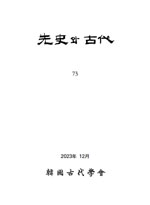백령성은 목곽시설, 현문, 치성, 다양한 문자 자료 등이 확인되고, 백제시대 사용·폐기되어 백제 석축산성 원형을 보여주는 중요 유적이다. 특히 백제성에서 거의 보이지 않던 현문이 백령성에서 확인되고, 구조 연구를 통해 백제만의 현문 축조법이 파악되어 중요 자료로 평가되고 있다. 이에 본 연구는 그동안 조사·연구된 백제 산성 자료를 더해, 백령성에 반영된 백제 산성의 축조 기술과 의미를 살펴 보았다. 백령성 성벽 축조법은 “편+협축식”으로 확인된다. 백제 성벽 축조법이 (웅진기)“A.편축식”→(사비기)“B.편+협축식”→“C.협축식”임을 고려할 때, 백령성 성벽은 “B.편+협축식”으로 사비 천도 이후 내륙과 변방 등, 통치와 관방체제 수립 과정에서 금산지역에 적용된 것으로 파악된다. 백령성 현문은 바닥 흙다짐, 단면 內高外低, 선단부 곡면처리 등 신라와 다른 백제만의 문지 구조를 이룬다. 백제 산성 문지 입지(형식)는 ‘①주능선 중앙(개거식)→②주능선 측면(개거식, 엇문식)→③비탈진 경사면(개거식, 엇문식, 현문식)’, 최종 ④개거→현문化’이다. 이 중 백령성 문지는 ③비탈진 경사면(현문+현문식)으로, 가장 발달된 기술이 적용된 접경지 산성의 특수성을 보여준다. 백령성 치는 짧게 돌출된 세장방형 구조이다. 백제 석축성벽 치는 나성의 치 2개소와 함께 총 3개소만 확인된다. 치는 성벽이 크게 회절하는 모퉁이에 위치하며, 치와 접한 성벽은 주변보다 두껍고 높게 축조되었다. 중국 도성에서 城隅는 성벽을 두껍고 높게 축성하고, 돌출된 성우 상면에 건물을 세워 방어하였다. 이는 고구려 도성에서도 확인되어 사비도성의 나성과 백령성의 모퉁이 치는 상면에 건물을 조성해 효율적으로 방어하는 기능을 채택한 것으로 판단된다. 금산 백령성은 둘레 207m의 소규모 석축산성이나 방어에 효율적인 문지, 치, 성벽 등이 구비된 최고의 기술이 집약된 보기 드문 유적이다. 백령성에서 드러난 기술력 있는 축조는 백제와 신라 대립이 첨예한 東界에 자리하고, 그 중에서도 신라 김유신 5만군 침공로 비정지 선상에 위치한 점도 주목해야 할 부분이다. 특히 성내 출토 명문·인장와 기년이 위덕왕 43~45년(596~598)으로 확인된 것은 이 시기 동계 전황을 반영하는 적극적인 사례라 할 수 있다. 이상 연구성과로 볼 때, 백령성은 고대 석축산성의 구조, 기능, 축조시기 연구에 중요한 기준을 제시하는 고고학사에서 기념비적인 사례라 할 수 있다. 향후 심도 있는 조사·연구를 통해 백제 접경지역의 고대 산성과 시대상을 밝힐 수 있는 중요 유적이 되기를 기대하겠다.
In Baengnyeongseong Fortress in Geumsan, wooden facilities, Hyeonmun-style gates, and chi(雉) were identified, and various text materials were excavated. In addition, it was used and discarded during the Baekje period, and became an important site showing the original form of Baekje's Seokchuksanseong Fortress. In addition, it is evaluated as data showing the construction method that is rarely seen in Baekje through a recent study on the structure of Baekje's own wall and Hyeonmun of gate. In this study, the construction techniques and historical significance of Baekje reflected in Baengnyeongseong Fortress were examined by adding the Baekje fortress data that have been investigated and studied so far. The construction method of the wall of Baengnyeongseong Fortress is understood as “Stacking on one side(片築)+Stacking on both sides(挾築式)”. Considering that the construction method of the Baekje wall is in the order of (Ungjin-gi)'A. tacking on one side(片築)'→(Sabigi)'B. Stacking on one side(片築)+Stacking on both sides(挾築式)'→'C. Stacking on both sides(挾築式)', it is presumed that the Baengnyeongseong Wall was applied in the process of governance and the establishment of a government system inside and outside Baekje after Sabicheon Island. Unlike Silla, Baengnyeongseong hyeonmun gate has a floor surface treated with soil, the inside is high, the outside is low, and the side threshold is bent, reflecting the unique structure of Baekje. The order of location and type change of the Baekje Fortress entrance is ① Located in the center of the main ridge(opening type 開渠式) → ② Positioned on the side of the main ridge(opening type 開渠式, eomun type 엇門式) → ③ Located on a steep slope(opening type 開渠式, eomun type 엇門式, Hyeonmun type 懸門式) and ④ final open type(開渠式) → Hyeonmun type(懸門式化). Among them, the gate of Baengnyeongseong Fortress is ③ located on a steep slope (Hyeonmun + Hyeonmun-type 懸 + 懸 Gate) where the most advanced technology is applied, showing the special characteristics of Baekje Fortress located in the border area. Baengnyeongseong's chi(雉) is a short and long protruding structure. There are a total of three identical remains, an eastern wall-chi(東城壁 雉) and the northern wall-chi(北城壁 雉) in Buyeo Naseong. Chi is located at the corner where the wall is greatly diffracted, and is built thicker and higher than the surrounding wall. In the Chinese capital, the corner walls(城隅) were built thicker and higher than the surroundings, and a building was constructed on the top of the protruding wall corners(城隅) to defend them. This case was also confirmed in Goguryeo City Wall, and it is believed that the corner Chi(雉) between Naseong and Baengnyeongseong Fortress in Sabi City adopted the function of effectively defending by building a building on the top. Baengnyeongseong Fortress is a rare relic that combines the best technology among Baekje's fortresses. It is small in size, but has the most efficient gates, chi(雉), and walls for defense. This technology-intensive construction of Baengnyeongseong Fortress is located on the eastern border where Baekje and Silla are sharply opposed. In particular, it will be noted that Silla Kim Yu-shin's 50,000 troops were located at the site of a supposed traffic route to invade Baekje. The text data identified in Baengnyeongseong Fortress are believed to be from 43 to 45 AD (the late 6th century BC). This is an active example of the situation in the eastern border region during this period. As such, Baengnyeongseong Fortress is an important site that provides important criteria for studying the structure, function, and construction period of ancient Seokchuksanseong Fortress. In the future, it is expected to be an important historical site that can reveal the ancient fortresses and times of the Baekje border area through deep investigation and research.
Ⅰ. 머리말
Ⅱ. 성벽시설의 조사현황
Ⅲ. 성벽의 축조 공정과 기법
Ⅳ. 문지와 치의 구조와 기능
Ⅴ. 백제 성곽 축조 기술상의 백령성 위치
Ⅵ. 맺음말
참고문헌
(0)
(0)
